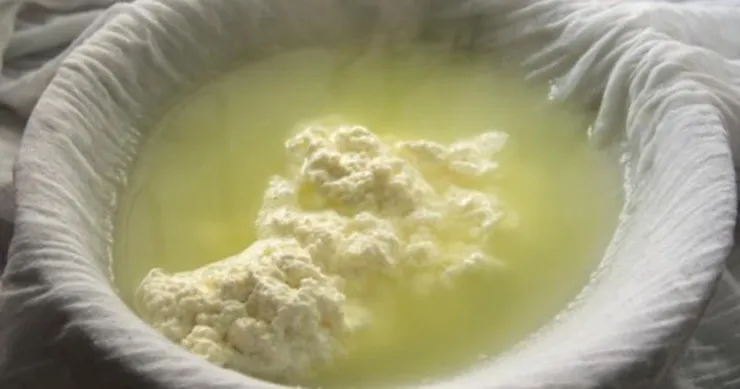Outside of major dairy regions, hearing the words 'whey-based spirits' is quite often returned with a blank look. One of the most common reactions to people hearing about whey-based spirits is disbelief. It is hard to imagine that the same product that has provided us with milk and cheese can produce a clean spirit, let alone anything that can actually taste good.
However, producing alcohol from whey offers several environmental, economic, and social benefits, making it an increasingly popular and sustainable choice for distilleries. In this post we delve into the key reasons why whey is an excellent raw material for alcohol production.
First, what exactly is 'whey'? The production of cheese and yogurt leaves behind whey, a by-product often considered waste. However, this "waste" is rich in fermentable lactose, making it an ideal base for spirits.

1. Reducing a Waste Product
As a by-product of cheese-making, historically large quantities of it were discarded as waste. By using whey to produce alcohol, a process we described in an earlier post, we not only reduce waste but also contribute to lowering our carbon footprint. Traditional spirit production involves grains or fruits, which require significant land, water, and other resources to produce. By transforming whey into a spirit, we not only minimize environmental impact by repurposing what would otherwise contribute to pollution and greenhouse gas emissions, which is discussed at The Fermentation Association, but we negate the need to create further demand for the other natural resources required for production.
Using whey as a fermentation substrate has been shown to result in lower carbon dioxide-equivalent (CO2e) emissions compared to traditional grain-based alcohol production, as evidenced by a 2018 study in the Journal of Diary Science. This process of upcycling whey not only prevents waste, but also generates a lower carbon and water footprint, making it a more sustainable choice for spirits production. This in turn helps us to engage with organisations such as ClimeCo to continue to drive market-based solutions to reducing waste.
2. Supporting the Circular Economy
The concept of a circular economy, as discussed through the CSIRO's Advancing the Circular Economy, focuses on minimizing waste and making the most of resources already available to us. By turning whey into alcohol, we leverage and contribute to this model, improving our resilience through diversification of our business and in turn supporting a stronger local economy. This practice allows us to gain greater flexibility to respond to macroeconomic events, as we integrate waste management with value-added production. Furthermore, by reducing our reliance on inputs from outside our local economy, we have a greater ability to keep the money within the community in which we are located. Finally, as we continue to grow and build resilience, a greater workforce can be supported, creating employment opportunities within the local community.
3. Boosting the Local Economy
The dairy industry, particularly in regions with a heavy reliance on cheese production, often struggles with significant economic challenges that is hard to imagine for the majority of the population. A 2019 Deloitte report: What is curdling the milk? The Challenges Facing the Australian Dairy Industry outlined the issues the industry has been facing, highlighting a problem that is at best understated: that diary production has been in decline since 2000. This has been followed more recently by a 2024 ABC report Dairy farmers exit industry in droves, factories close as reliance on imported milk products grows, identifying swaths of dairy farmers quitting the industry and converting land to other uses.
The simple fact is that Australia is facing a significant shortage of dairy farmers. 2024's milk production is estimated to be approximately 3 billion litres, down from the industry peak of 11 billion in 2000. As reported by the ABC, the final nail for many farmers was the start of the 12-year millennium drought, which has seen numerous diary famers exit the market. The turn of the century saw 7,409 Victorian dairy farmers, down to 2,796 in 2024.
Number of Victorian Dairy Farmers
In addition, soaring diary imports like butter and cheese, which according to Diary Australia have nearly tripled over the past 22 years, from 11% to 27%. Combine all of these factors with the additional pressures faced by most dairy farmers being squeezed by huge multinationals, as outlined by the ABC, it paints a stark picture for the industry. With their inability to make a profit, should we be surprised that anybody would stay to do this job?
By offering a viable alternative to relying on major buyers alone, producing alcohol from whey provides a lifeline to dairy farmers, albeit a small one. Innovations like this are crucial in areas where the dairy industry faces financial difficulties, making it hard for farmers to sustain their operations. The practice of upcycling whey into spirits helps invigorate local economies by diversifying income streams and creating additional revenue opportunities. In an industry where new entrants are scarce due to limited incentives, our hope is that this innovative approach can attract fresh talent and investment into dairy farming.
Shop Now
Curious to try our spirits? Visit our online shop and browse our range of gin, vodka and liqueur - all made onsite from whey!
Same day shipping for a flat fee of $10. Go on, treat yourself!
Visit Us
Curious to learn more? We welcome you to visit St Duke's Distillery to view the distillery, discover the art of distilling firsthand and sample our unique spirits. Whether you're a spirits enthusiast or new to the world of distilling, you'll find something to love at St Duke's.
Stay Connected
Stay updated with our latest news, events, and releases by following us on social media and join our community of spirits lovers. We look forward to sharing our journey with you and raising a glass to many more milestones together.
Thank you for joining us on this journey through the art of distilling. Cheers to the future and the exciting adventures ahead!